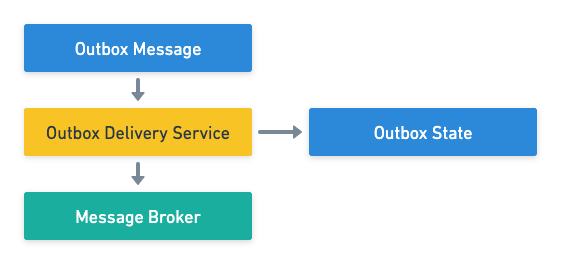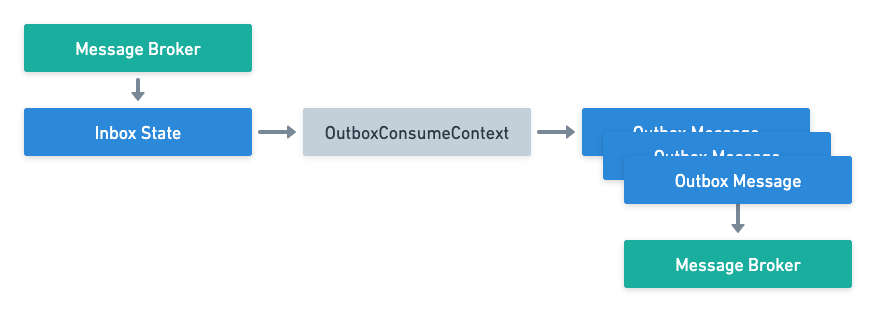Transactional Outbox
It is common that a service may need to combine database writes with publishing events and/or sending commands. And in this scenario, it is usually desirable to do this atomically in a transaction. However, message brokers typically do not participate in transactions. Even if a message broker did support transactions, it would require two-phase commit (2PC) which should be avoided whenever possible.
While MassTransit has long provided an in-memory outbox, there has often been criticism that it isn't a real outbox. And while I have proven that it works, is reliable, and is extremely fast (broker message delivery speed), it does require care to ensure operations are idempotent and when an idempotent operation is detected events are republished. The in-memory outbox also does not function as an inbox, so exactly-once message delivery is not supported.
The Transactional Outbox has two main components:
- The Bus Outbox works within a container scope (such as the scope created for an ASP.NET Controller) and adds published and sent messages to the specified
DbContext. Once the changes are saved, the messages are available to the delivery service which delivers them to the broker. - The Consumer Outbox is a combination of an inbox and an outbox. The inbox is used to keep track of received messages to guarantee exactly-once consumer behavior. The outbox is used to store published and sent messages until the consumer completes successfully. Once completed, the stored messages are delivered to the broker after which the received message is acknowledged. The Consumer Outbox works with all consumer types, including Consumers, Sagas, and Routing Slip Activities.
Either of these components can be used independently or both at the same time.
Bus Outbox Behavior
Normally when messages are published or sent they are delivered directly to the message broker:

When the bus outbox is configured, the scoped interfaces are replaced with versions that write to the outbox. Since ISendEndpointProvider and IPublishEndpoint are registered as scoped in the container, they are able to share the same scope as the DbContext used by the application.

Once the changes are saved in the DbContext (typically by the application calling SaveChangesAsync), the messages will be written to the database as part of the transaction and will be available to the delivery service.
The delivery service queries the OutboxMessage table for messages published or sent via the Bus Outbox, and attempts to deliver any messages found to the message broker.

The delivery service uses the OutboxState table to ensure that messages are delivered to the broker in the order they were published/sent. The OutboxState table is also used to lock messages so that multiple instances of the delivery service can coexist without conflict.
Consumer Outbox Behavior
Normally, when messages are published or sent by a consumer or one of its dependencies they are delivered directly to the message broker:

When the outbox is configured, the behavior changes. As a message is received, the inbox is used to lock the message by MessageId.

When the consumer publishes or sends a message, instead of being delivered to the broker it is stored in the OutboxMessage table.

Once the consumer completes and the messages are saved to the outbox, those messages are delivered to the message broker in the order they were produced.

If there are issues delivering the messages to the broker, message retry will continue to attempt message delivery.
For details on configuring the transactional outbox, refer to the configuration section.